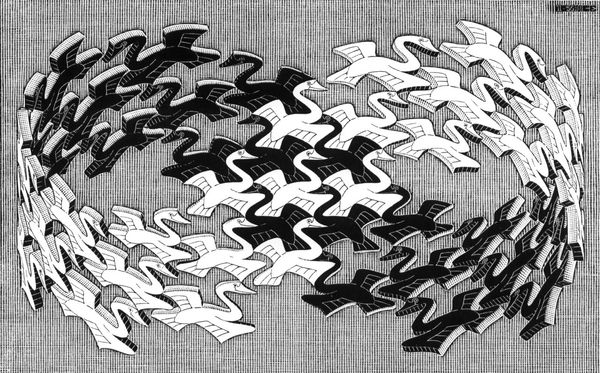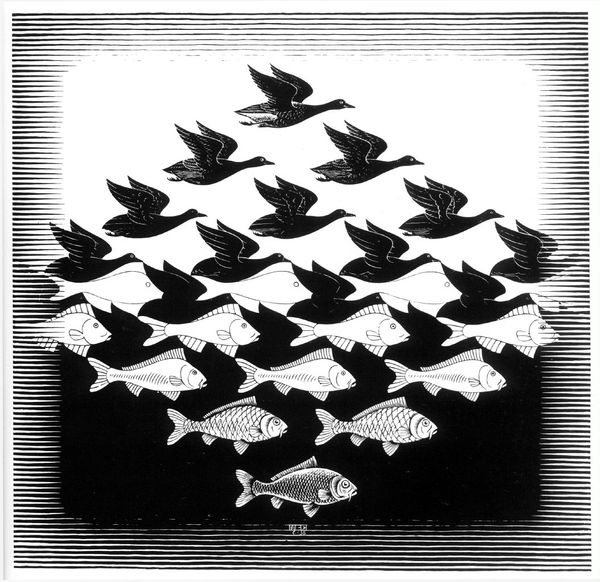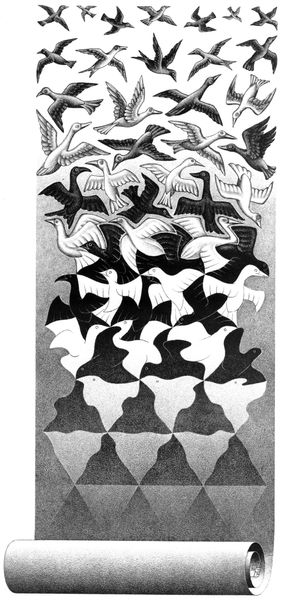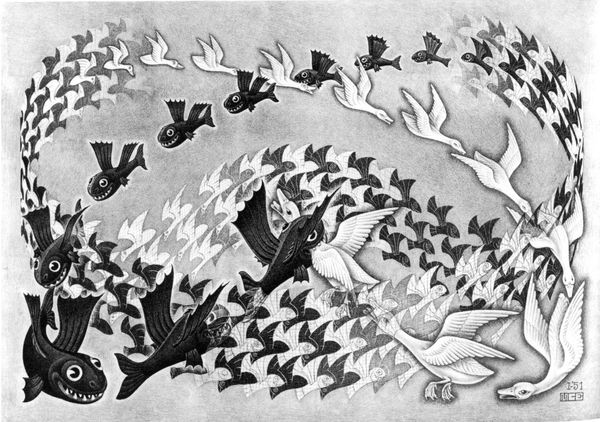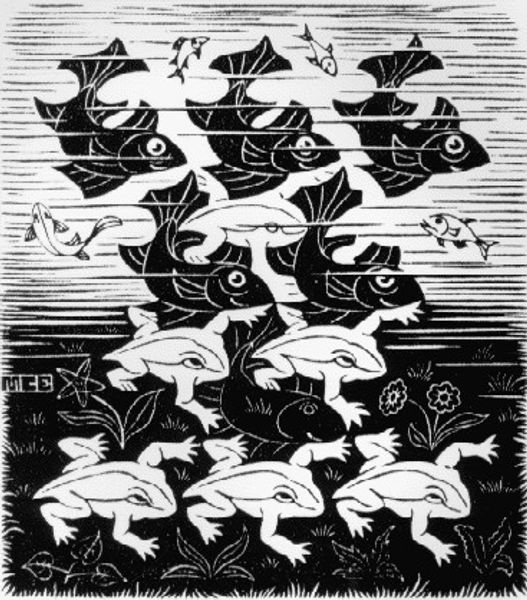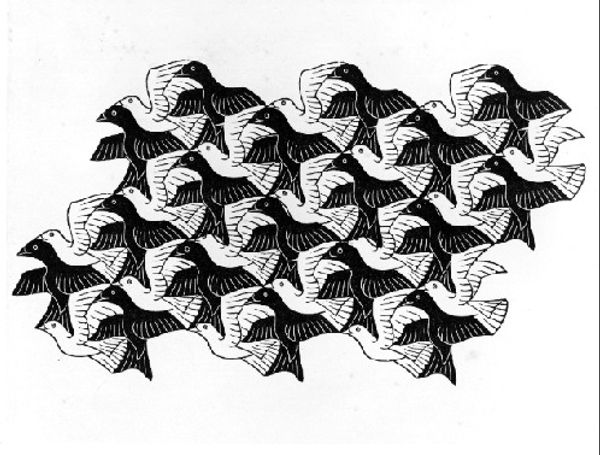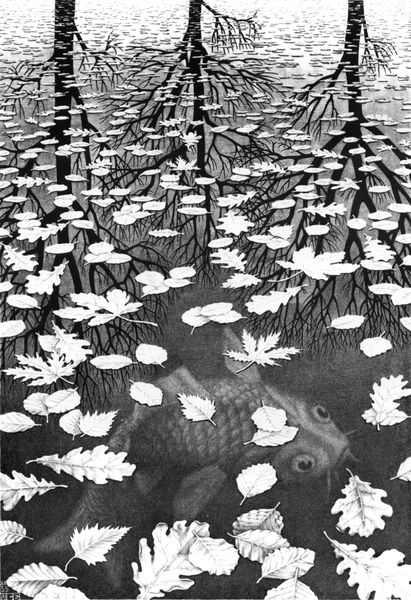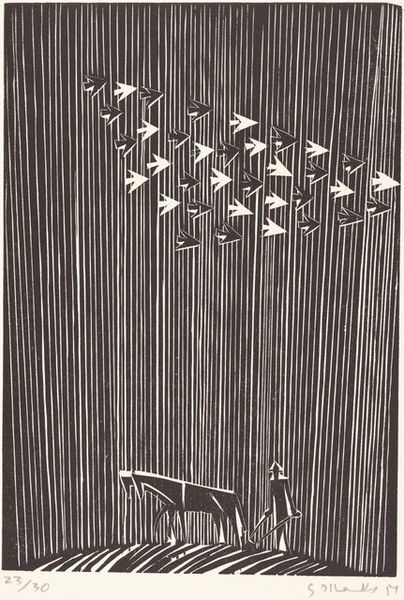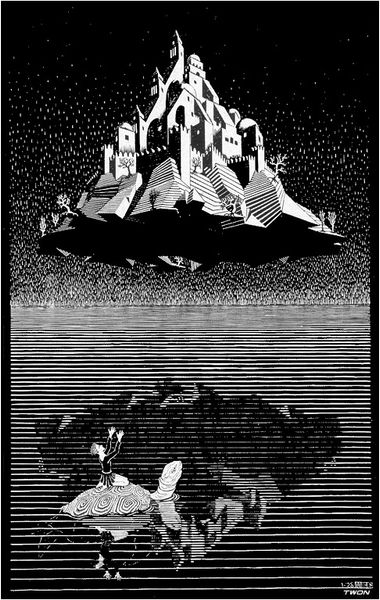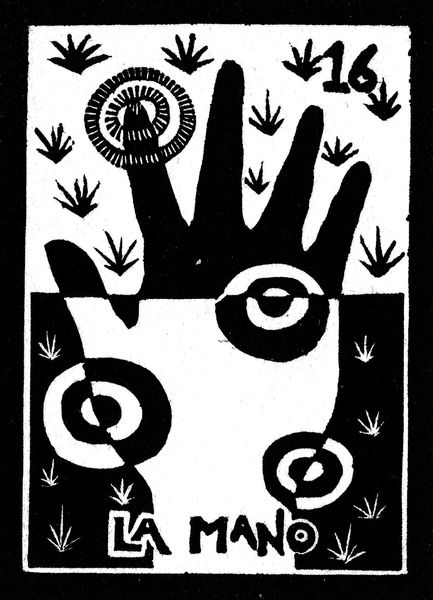
graphic-art, print
#
art-deco
#
graphic-art
#
cubism
#
fish
#
animal
# print
#
pattern
#
bird
#
geometric
#
abstraction
#
surrealism
Copyright: M.C. Escher,Fair Use
Editor: This is M.C. Escher's "Sky and Water II" from 1938. It's a woodcut print that immediately plays with your perception. The way the birds transform into fish is so seamless. How do you interpret this transformation through a formal lens? Curator: The genius of "Sky and Water II" lies in its formal articulation of tessellation. Observe how Escher manipulates positive and negative space. The white shapes of the fish become the black shapes of the birds, a perfect mirroring across the horizontal plane. Notice the precise repetition and interlocking of forms. Do you see how the compositional structure emphasizes this cyclical exchange? Editor: Yes, I see that now! The way each bird fits so snugly into the space defined by the fish. The stark contrast between black and white further accentuates the figures and creates dynamism. Curator: Precisely. The value contrast isn't merely decorative; it's structurally integral. Consider the implications of this visual equivalence. Escher seems to suggest that the essence of 'birdness' and 'fishness' is, at a structural level, interchangeable. Do you agree that this work invites a reconsideration of fixed categories? Editor: I think so! That's such an interesting way to think about it. Seeing how the shapes and contrasts define each other is enlightening. Thanks for explaining it so well! Curator: Indeed. Reflecting on the formal structure here opens exciting avenues for thought, wouldn’t you agree?
Comments
No comments
Be the first to comment and join the conversation on the ultimate creative platform.
